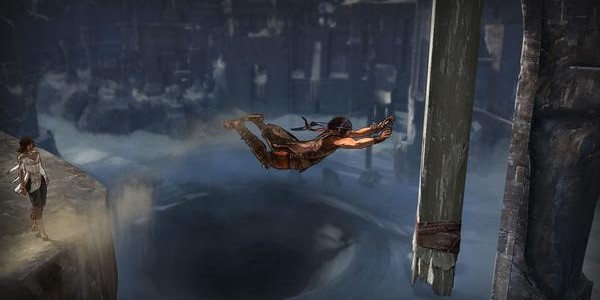As the video game industry marches eternally into the realm of increasingly sophisticated technology, creating video games that push the envelope and take full advantage of the resources available to developers becomes ever more costly — a fact of life that developers and publishers never hesitate to point out.
Claims that a game needs to sell at least X-hundred-thousand copies in order to simply break even are common, and complaints about unoriginal game content are often rebutted with evidence that consumers more often than not tend to play it safe and go with what they are familiar with when it comes time to cash out at the register. Whether the average game consumer is indeed the same man, woman, boy, or girl whose passion for the pursuit of gaming excellence drives them to complain about these seeing-eye sequels and copycat productions is up for debate, but in any case, the dissonance between critical and fiscal demand is quite evident. But that is for another discussion.
In 2008, we have seen a great many rehashes of old titles — the numbers 2, 3, 4, and beyond adorned many retail packages this year — but we have also seen games that represent great leaps of faith on the part of developers and publishers. I personally praised games like Penumbra: Black Plague, Patapon, Braid, Too Human, and Mirror’s Edge for challenging traditional gaming archetypes and delivering truly innovative play experiences, and sincerely hope that the positive response to these games far outweigh the negative, encouraging their creators to continue exploring ways to expand the definition of video games. They may not please every gamer, but these games are essential to the industry’s growth.
Ubisoft’s Prince of Persia producer Ben Mattes seems to agree, and even cited Mirror’s Edge as a big risk-taker in 2008. In a recent interview, he expressed his disappointment at the lack of recognition his studio received for the “high level risks” involved in the acrobatic platformer’s development.
In terms of us taking a shot and missing, I guess I would have to go a little higher level here and speak about risks in general.
For years we’ve all been reading complaints about sequels and companies churning out carbon copies of proven formulas without focusing on innovation or taking risks. Fans, developers and critics alike seemed ravenous for new ideas — new IPs; major innovations — advances in this art-tertainment (I’m trying to coin a new term here ;)) form we all love.
We tried to really embrace this challenge on PoP. We set out to keep a few core fundamentals but to re-imagine everything else, discarding some very well entrenched ideas not only about the brand but also about video games in general (and we weren’t alone. EA took some major risks this year with new IP and innovations – Mirror’s Edge and Dead Space, for example).
What surprises me is how little these high level risks seem to be noticed and appreciated as attempts to shake up the industry and push things forward. Perhaps I’m an idealist, but I think perhaps I was expecting a few more virtual pats-on-the-back for our attempts to do something new.
Whether this means we didn’t totally succeed in our risk taking or whether our industry in fact has a stronger appetite for the familiar then it wants to admit remains to be seen. Honestly I hope it is the former.”
Yes, studios should be recognized for their efforts to elevate the medium to new plateaus, but what exactly constitutes a thorough attempt to achieve this sort of groundbreaking development? What determines whether a specific design decision is merely a change from the established formula, or if it is indeed a “major risk” in the creative process? How do we define the term “risk” as it relates to video game development?
Blurring the lines between genres, infusing topics typically reserved for purely academic discourse and analysis, introducing previously unimagined and untested gameplay mechanics, presenting a product whose meaning is entirely subject to audience interpretation; these are risks — design elements that take gamers out of their comfort zone and reach into unexplored territory.
Did Prince of Persia ever really push the envelope in such a way? Eliminating consequences for gamers’ mistakes was a bold move, but it never felt like a monumental change; the game did not represent a paradigm shift, and it certainly didn’t fundamentally alter the way people think of video games. I do applaud Ubisoft for their efforts with Prince of Persia, but Elika was not revolutionary.
If anything, she took the “risk” right out of the game. :-p


















